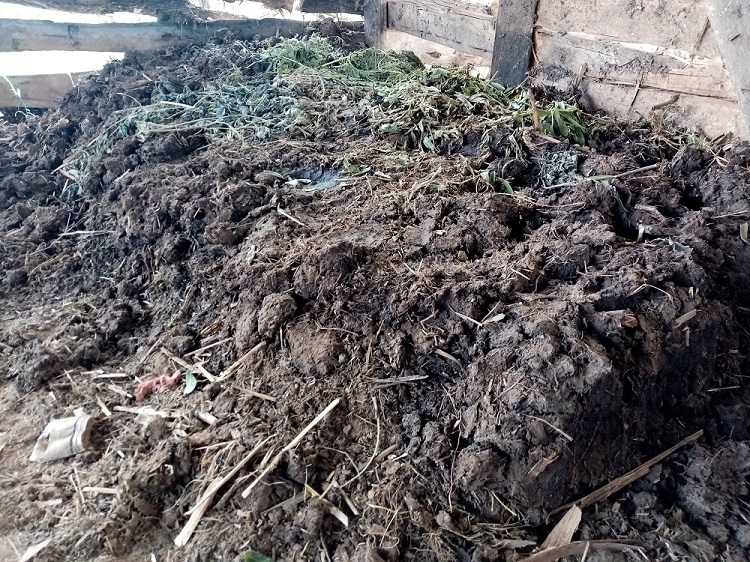Boma compost is a composted mixture of crop residues and livestock urine and dung. When well made, it can lead to dramatic improvements in crop and soil productivity.
Making boma compost is a process. The first step involves laying down high carbon crop residues, like maize and sorghum stems, as bedding in the boma where the animals sleep at night. The animals break up the stems with their hooves and the stems soak up the excreted urine, which is extremely nutrient rich (it often contains more nutrients than the manure) and is a valuable resource that is otherwise lost to farmers.
The residues are left in place until they become thoroughly coated in urine and dung. Then they are removed from the boma for composting. The compost making and curing area should be covered so that the material is not exposed to the rain and sun, which will otherwise greatly reduce the compost quality.
Making boma compost is a good way of using high carbon residues that might otherwise not be easily broken down. It also greatly increases the quantity and quality of compost made on the farm. The effect of boma compost on crop performance and soil health can be quite dramatic.
Application rates
Row cropping of maize or sorghum: If boma compost is the only fertilizer to be used, apply three 2-kg containers per 5 meters of planting row. This rate assumes maize or sorghum plants are spaced at 25-30 cm within a row. For other arrangements, divide the three containers of compost among 20 plants.


Recent Comments